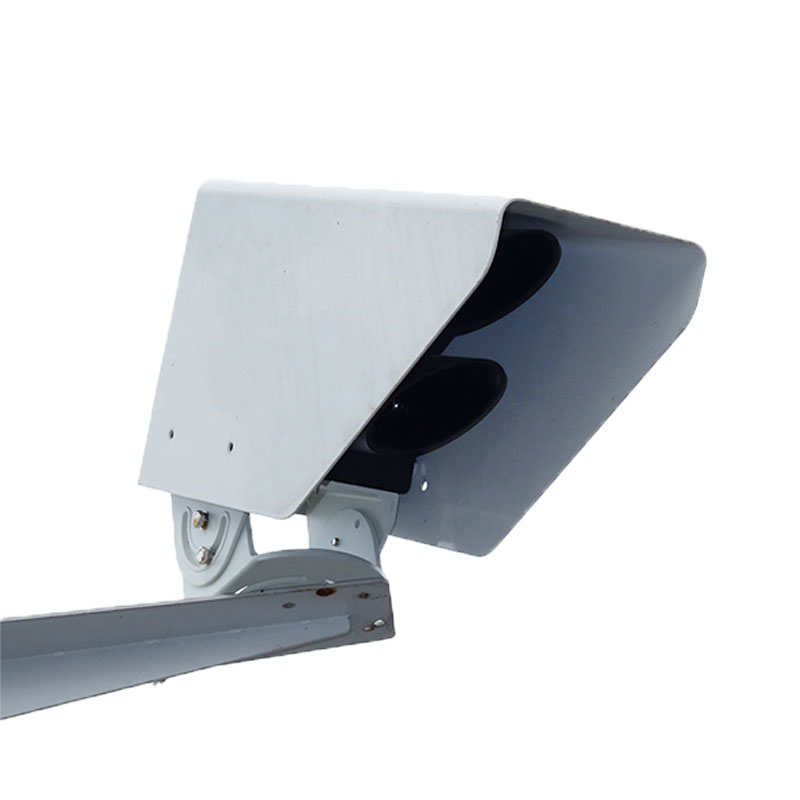Tianyi Sensor IOT Technology Co., Ltd
Sales Manager:Ms. Emily Wang
Cel,Whatsapp,Wechat:+86 15898932201
Email:info@fengtutec.com
Add:No. 155 Optoelectronic Industry Accelerator, Gaoxin District, Weifang, Shandong, China

Sales Manager:Ms. Emily Wang
Cel,Whatsapp,Wechat:+86 15898932201
Email:info@fengtutec.com
Add:No. 155 Optoelectronic Industry Accelerator, Gaoxin District, Weifang, Shandong, China

Model:FT-LM2
Brand:tianyi
Non Invasive Road Sensor Product Introduction
Non Invasive Road Sensor measures road surface conditions such as humidity, ice, snow or frost, and also provides ambient temperature, humidity and atmospheric pressure.The LM2 is a Non Invasive Road Sensor that uses remote sensing technology to avoid damage to the road and thus avoid traffic interference caused by the installation of road weather stations. Multi-spectral measurement technology enables accurate detection of the thickness of icy, snow and water on the surface of the road. In road conditions where the embedded pavement sensor is inconvenient or inaccessible, the LM2 detector is the ideal choice. Remote sensing installation means that there is no need to close the road or cut the road surface, and the installation work is both safe and convenient. Low maintenance is an ideal choice for road meteorological systems. It can be installed on existing weather stations or on other buildings with unobstructed views of the road surface.
The LM2 detector is installed in an all-weather, durable housing to ensure that it can withstand severe weather, which allows it to provide accurate data in any weather conditions. By providing road surface condition information, the LM2 detector provides accurate monitoring data to the road management department and takes response measures before road safety risks occur. Rugged design, all-weather measurement
Non Invasive Road Sensor Features
Test the road area, water, snow, and icing thickness
Long distance remote sensing to detect road conditions
Non-buried installation is fast and easy
Low maintenance cost
Integrate into existing highway automatic meteorological monitoring network applications
Long distance installation
Bridge surface
Areas with frequent accidents
Areas with high traffic flow
Characteristics of areas with frequent rain and snow
Long distance measurement of road area water, ice and snow
Measure the road state
Measure the degree of water accumulation, ice surface, slipperyness
Non-buried design
Resistant to rust
Infrared detection up to 15 meters
No need for closed lanes, easy installation and maintenance
Non Invasive Road Sensor Key Metrics
Model LM2
Monitoring distance 2-15 meters
Detection diameter 23cm angle 30-90 degrees
Power input 220VAC, 24VDC
Maximum power consumption 5W (including lens heating)
Operating temperature -38ºC to +70ºC
Operating humidity 0 to 100%
Road state parameter output
Road area water thickness: 0.00-10mm Resolution: 0.01mm Accuracy: 0.1mm
Pavement ice thickness: 0.00-10mm
Road area snow thickness: 0.00-10mm
Pavement slippery degree: 0.00-1 resolution: 0.01 (*)
Pavement temperature: -38ºC to +60ºC (*)
Pavement humidity: 0-100% (*)
Ambient temperature and humidity: -40ºC to +70ºC (*)
Atmospheric pressure: 150-1100hPa
Pavement status report dry, damp, wet, snow, ice, ice water mix (*frost)
Lens pollution detection optical lens pollution level measurement and internal automatic pollution compensation
Pavement materials concrete and asphalt pavement
Communication RS485, RS232
Average failure-free 10 years
No security issues
Infrared remote sensing measurement technology
Note: * marked parameters are optional, not standard.
Explosion - proof weather stations are meteorological monitoring devices specifically designed to operate in hazardous environments. With the development of industries such as manufacturing, military, and chemical, the demand for explosion - proof weather stations has been growing steadily. The main...
The measurement of wind speed and direction is of great importance in many fields, such as weather forecasting, high - speed railways, wind power generation, industrial and agricultural production, and scientific research.In the traditional meteorological field, the measurement of wind speed and dir...
Traditional weather stations mostly use mechanical devices such as wind speed and direction indicators to measure meteorological elements. These devices have some limitations. For example, mechanical components are prone to wear and icing, requiring regular maintenance and calibration. Moreover, the...
Under the general trend of technology empowering agriculture, Agricultural meteorological stations are gradually becoming key facilities for ensuring agricultural production and promoting the modernization of agriculture.It can conduct real-time and precise monitoring of various meteorological...